Gluten Free Sourdough Starter: How to Activate it
If you have received some Gluten Free Sourdough Starter, it most likely came to you dehydrated. You probably want to get baking with it as soon as possible, so I am here to help you do just that. Let me be the first to welcome you to the world of Gluten-Free Sourdough!
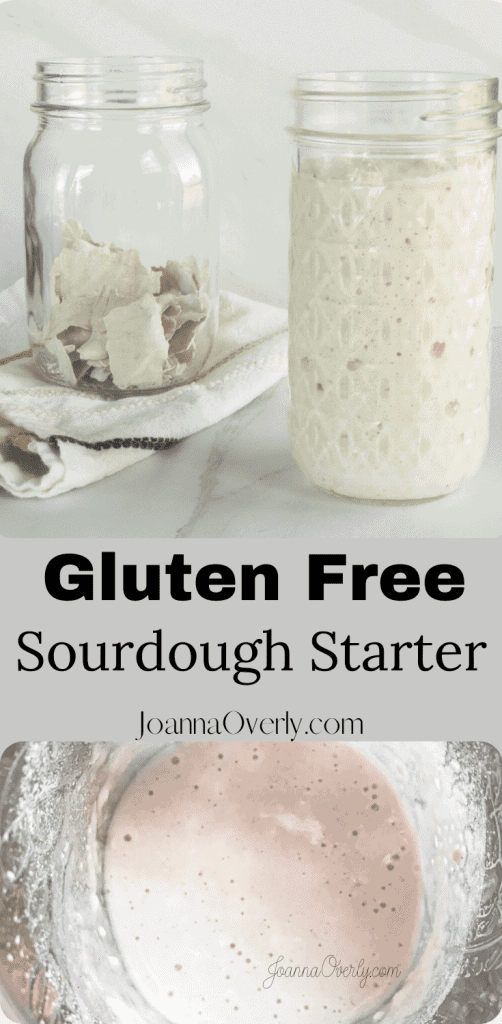
Please note that this post contains affiliate links and I may possibly earn a commission on qualifying purchases at no extra cost to you. I am an Amazon associate and I make a commission on qualified purchases
Where to Buy A Gluten Free Sourdough Starter
Cultures for Health has a gluten free sourdough starter that is shipped in a dehydrated state and you can easily find it on Amazon for about $15: Gluten Free Sourdough Starter
Step by Step Instructions to Bring your Gluten-Free Sourdough Starter to Life
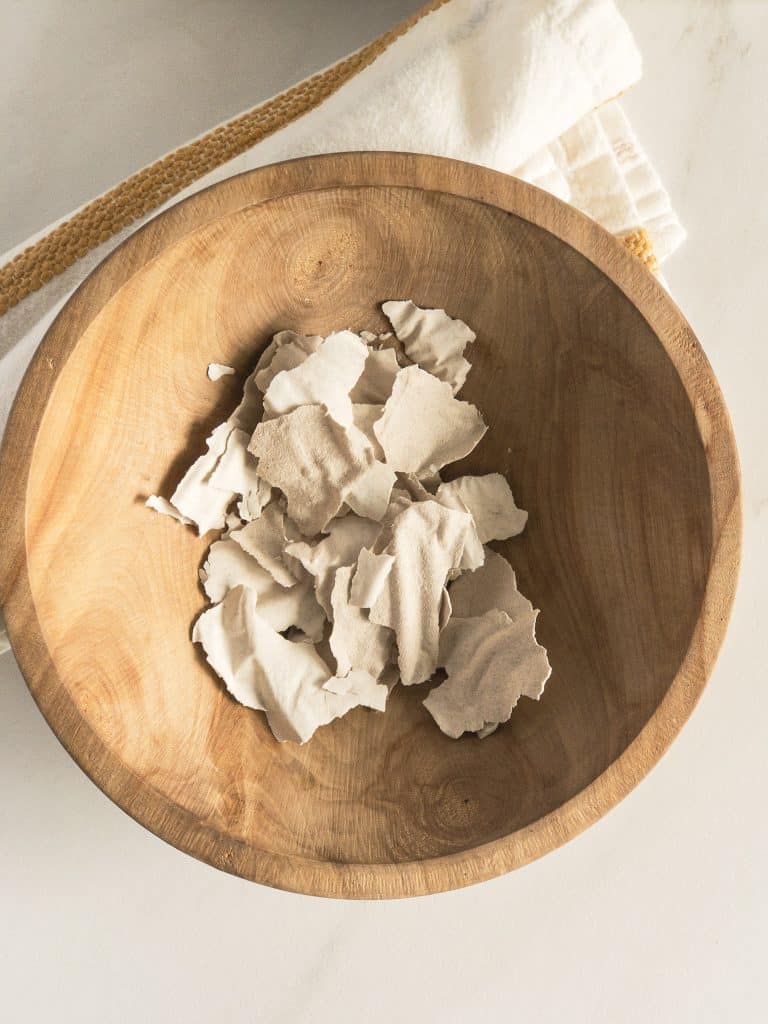
- Once you have received your dehydrated Gluten Free sourdough starter in the mail, take the flakes out of the packaging and add them to a pint-size mason jar. Add 2 ounces of purified water. (See tips at bottom of post)
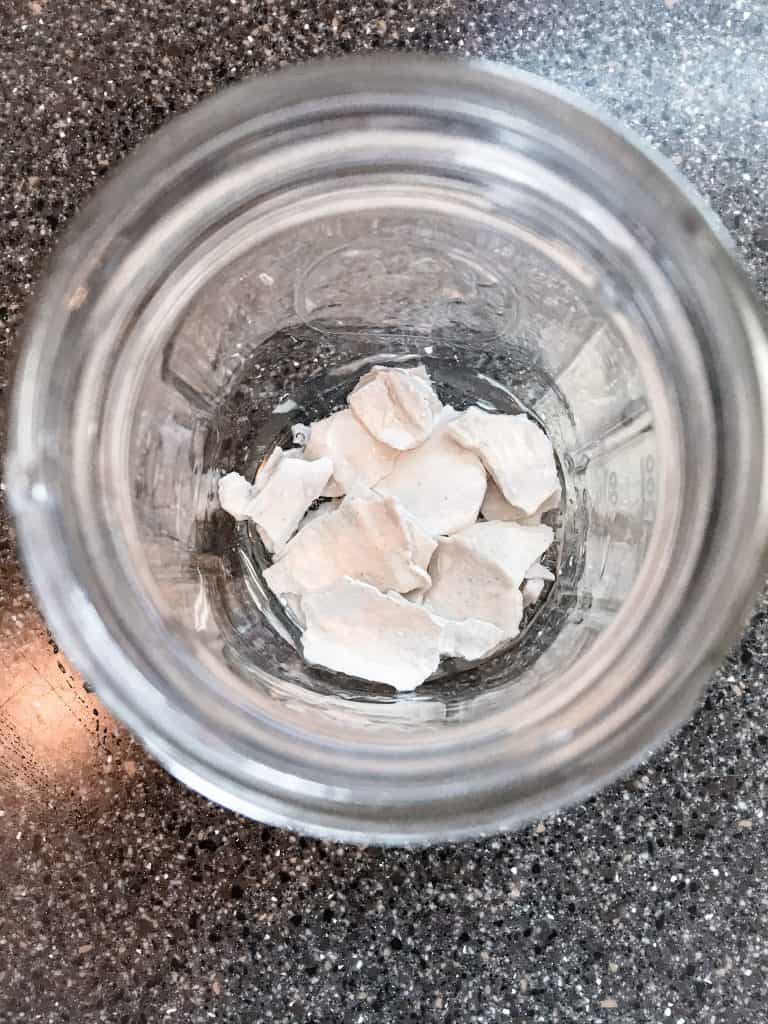
2. Give it a stir. This will take some time for it to fully rehydrate, so don’t expect it to be a paste after one stir. Continue to let it sit, and stir every time you walk by. It will start to get softer and more liquid with time.
Cover it with a small cloth or paper towel, secured with a rubber band. This keeps it clean but also lets it breath in the natural yeast that you want to harness into your gluten-free sourdough starter.
3. Once it has come to a paste-like texture, add 1 tablespoon of gluten-free flour (see notes below) and stir it to combine. Congratulations! You just feed your new pet. Give her a name, and yes she is a woman because she is the mother of all the starter to come.

4. Wait about 24 hours. If your house is cold, it may take a bit longer to fully awaken, to get bubbly. If your house is warm, it may happen faster.
5. Once those 24 hours have passed, feed it again with another 1 tablespoon gf flour and 1 tablespoon of purified water. You should start seeing more activity and bubbles soon, showing that it is happy.
6. 12 hours later, feed it again. 1 tablespoon GF flour, 1 tablespoon purified water, and stir. Transfer it to a new clean mason jar to deter mold from joining the party. We only want good microbes here.
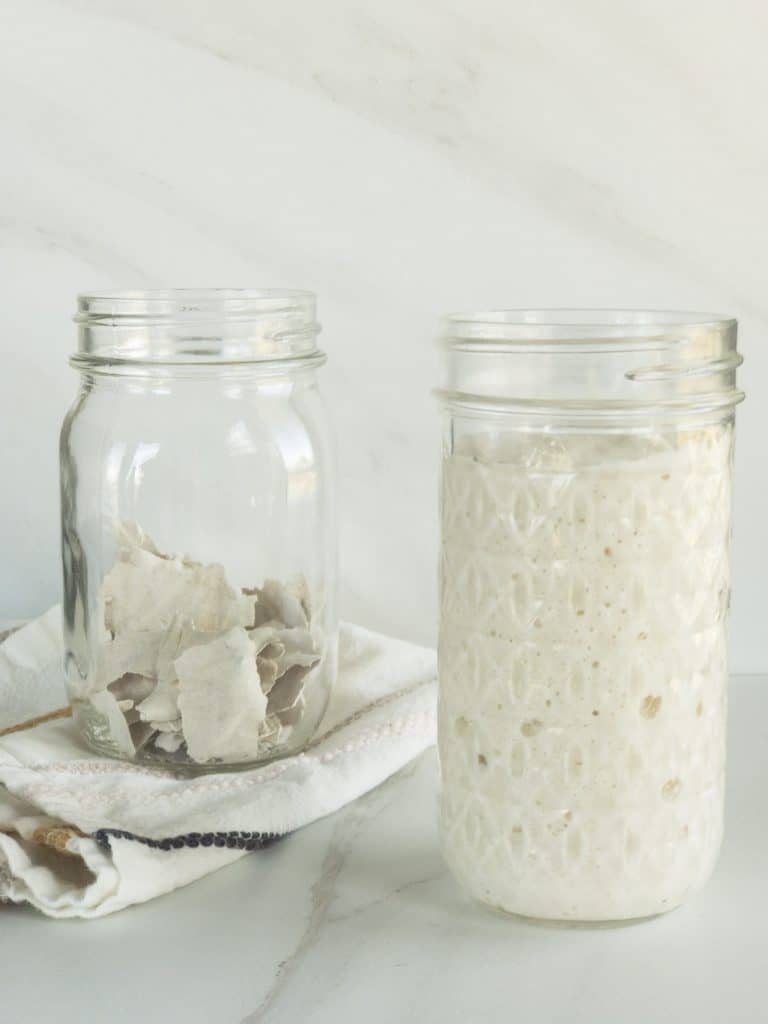
That should do it!
You now have an active, happy gluten-free sourdough starter! You will now continue feeding her daily. Use the 1:1:1 ratio guide till you get to know her better. For example, if you now have 1 cup of starter, feed it 1 cup of GF flour and 1 cup of purified water. (A kitchen scale is highly suggested for this part of the process but also for making GF Sourdough Bread.) Now, this will lead you to understand the power of compound interest. The next day, if you haven’t baked anything yet, you will need to feed it around 2 1/2 cups of GF flour and water, leading the following day to be more and more.
This is why people have recipes for sourdough starter discard. You don’t really want to be throwing food away, but removing some helps you not have so much to feed daily. I have made muffins, waffles, and crackers, but my favorite uses for the extra starter is pizza crust and sourdough skillet. Getting the GF version of those up on the blog will be happening soon.
Now once you get to know her more, you will find that GF Sourdough Starters do not need to be feed like typical sourdough with the 1:1:1 ratio. It is a bit more forgiving; as long as you give it some daily love, she will be fine. Be looking for signs of activity like bubbles and growth.
Once it is well established if you prefer you can keep her in the fridge. Doing this helps to slow down the fermentation process. So you can feed it just once a week. Then you only need to pull it out a day or two before you plan on baking. Feed it the day you bring it out to the counter and continue as normal.
You will soon be on your way to baking and cooking up delicious creations.
Notes About Gluten-Free Sourdough Starter
Each manufacturer of gluten-free sourdough starter will also send you instructions about how to activate it. I have seen most of these starters call for rice flour to be the flour replacement of choice. Personally, I have had great success with a combination of rice flour and King Arthur, Measure for Measure Flour.
In order to recreate the measurements I use in my recipes here on my blog, I would first get the gluten-free sourdough starter active with rice flour. Follow the manufacturer’s instructions for a few weeks to get the starter going strong.
Transitioning Cultures for Health Gluten-Free Sourdough Starter to King Arthur Gluten-Free Flour
After two weeks of feeding your new gluten-free sourdough starter with rice flour, you can start transitioning it. Amounts of gluten-free flour will vary depending on how much starter you are feeding.
If ever the starter seems to not be responding well to this timetable, slow down the transition process and return to using more rice flour till it seems active again.
But for an example let’s say you have 1 cup starter to feed. You have been feeding it all rice flour and purified water until now.
On the first day, (day one) feed it 1/2 cup rice flour and 1/8 cup King Arthur measure for measure gluten-free flour blend with a little over 1/2 cup of purified water.
Stir it all together and pour it into a new clean glass.
The next day, (day two) as long as it is looking active, repeat the same measurements as the first day after removing enough starter to be left with 1 cup.
You will always need to remove the excess leaving only 1 cup every day. (You can save this “discard” and use it in gluten-free sourdough discard recipes.) It is also a best practice to always pour the newly mixed GF sourdough starter into a clean glass container to keep mold from developing.
On day three: change the amounts to 1/4 cup rice flour and 1/4 cup King Arthur measure for measure gluten-free flour blend, with 1/2 cup purified water and mix with the 1 cup of starter.
Day four: repeat day three’s measurements again.
On day five: do 1/8 cup of rice flour to 1/2 cup of King Arthur measure for measure gluten-free flour blend with a little over 1/2 cup of purified water to the 1 cup of gluten-free sourdough starter.
Day six: repeat day five’s instructions again.
Day seven: you can fully transition to fully using King Arthur’s measure for measure gluten-free flour blend. Feed the starter 1/2 cup King Arthur’s measure for measure gluten-free flour blend with 1/2 cup purified water.
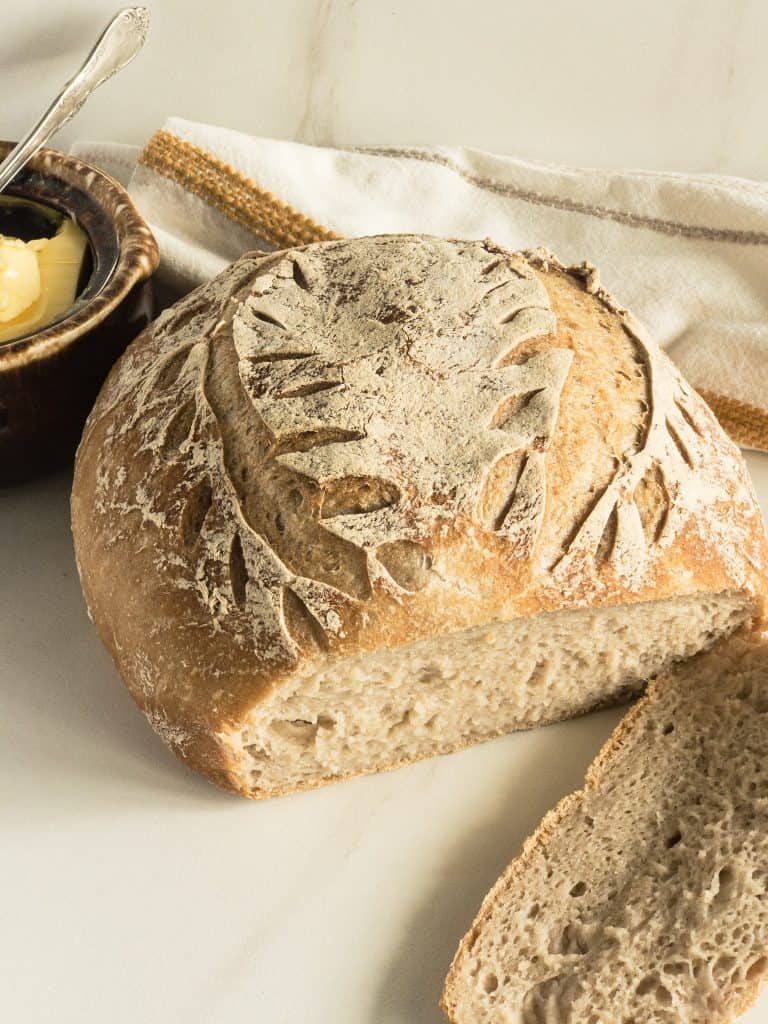
Tips for Gluten-Free Sourdough Baking
Only use purified water. I am on city water that has chlorine added, so we have a Berkey water filtration system. Before we had that though, I would buy gallons of purified water at the grocery store. Chlorine kills microbes.
(Another reason to not drink it without filtering it. If you are curious as to what I do to help my families gut health, click here)
Gluten-Free Flour: I use the King Arthur Measure for Measure Gluten-Free Flour mix. I have found it to be the best for the price and gives good results with my Gluten-Free Sourdough Bread recipe which you can find here.


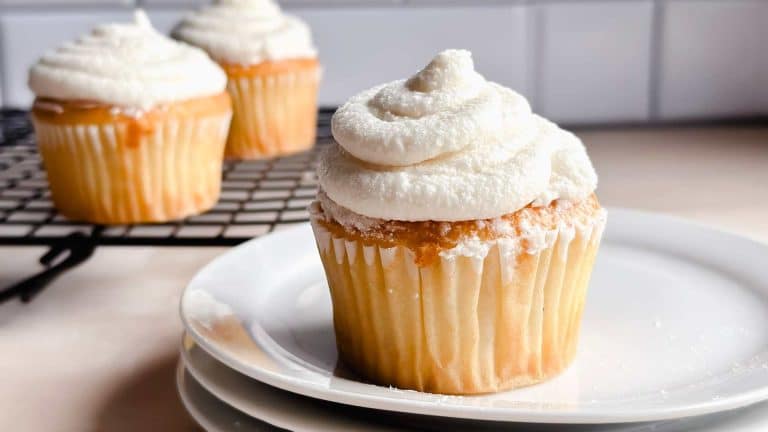
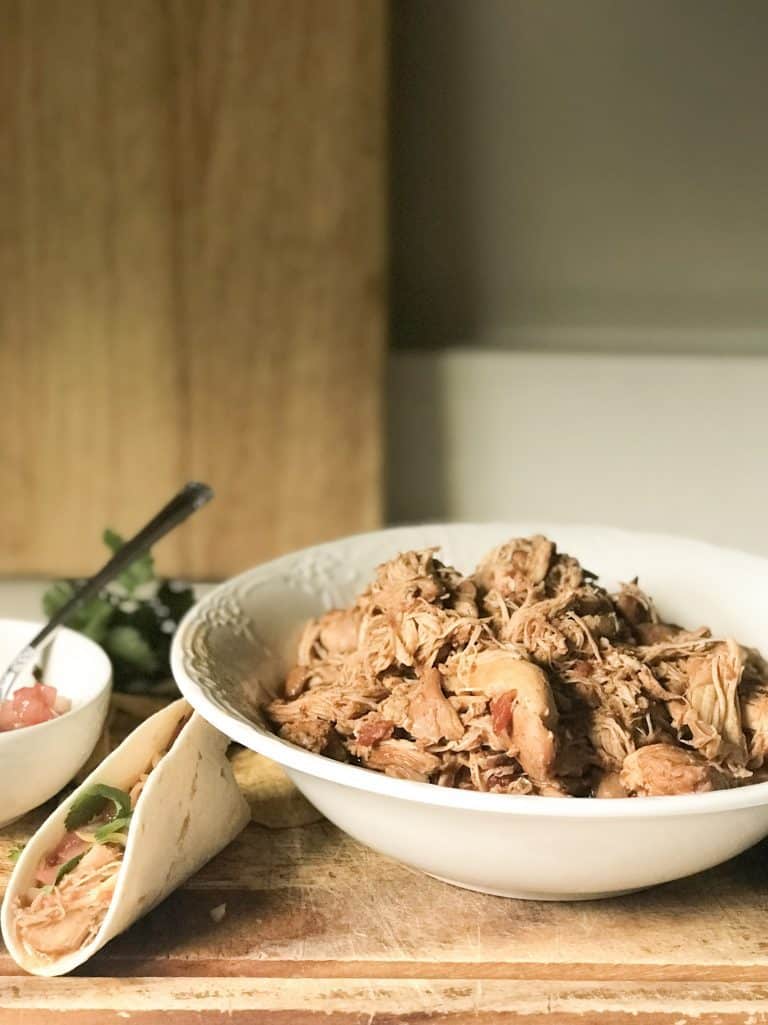
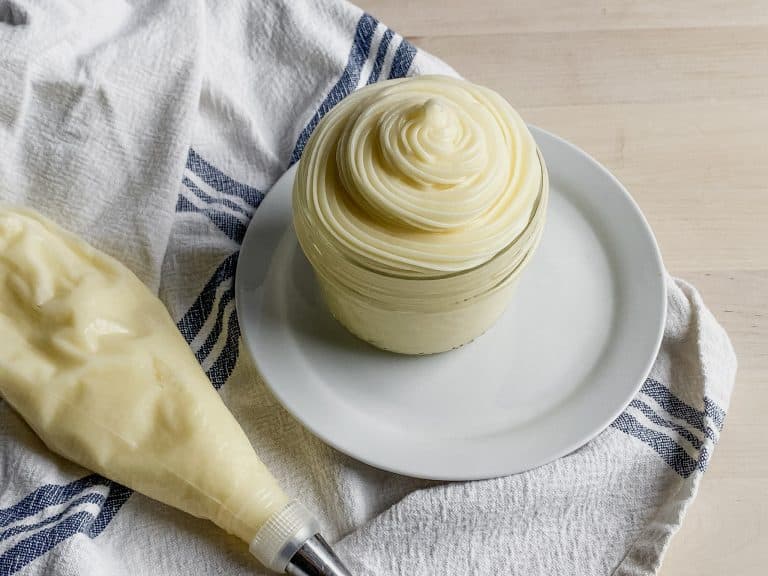
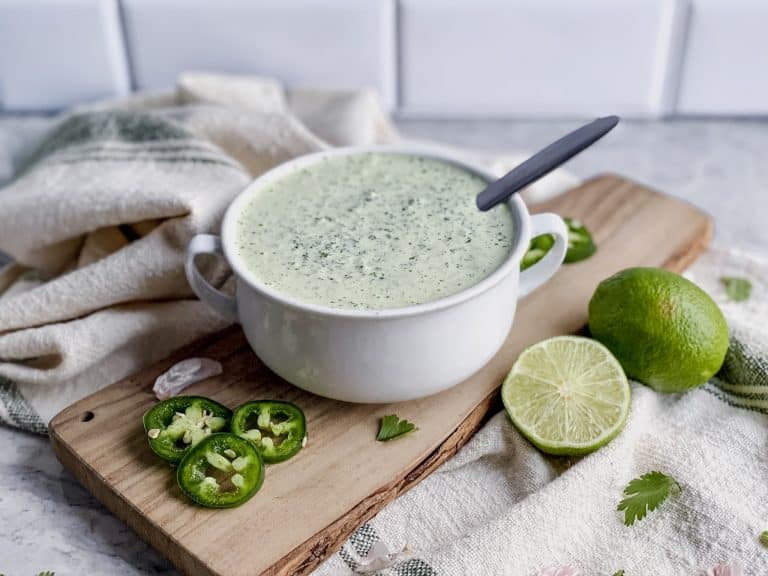

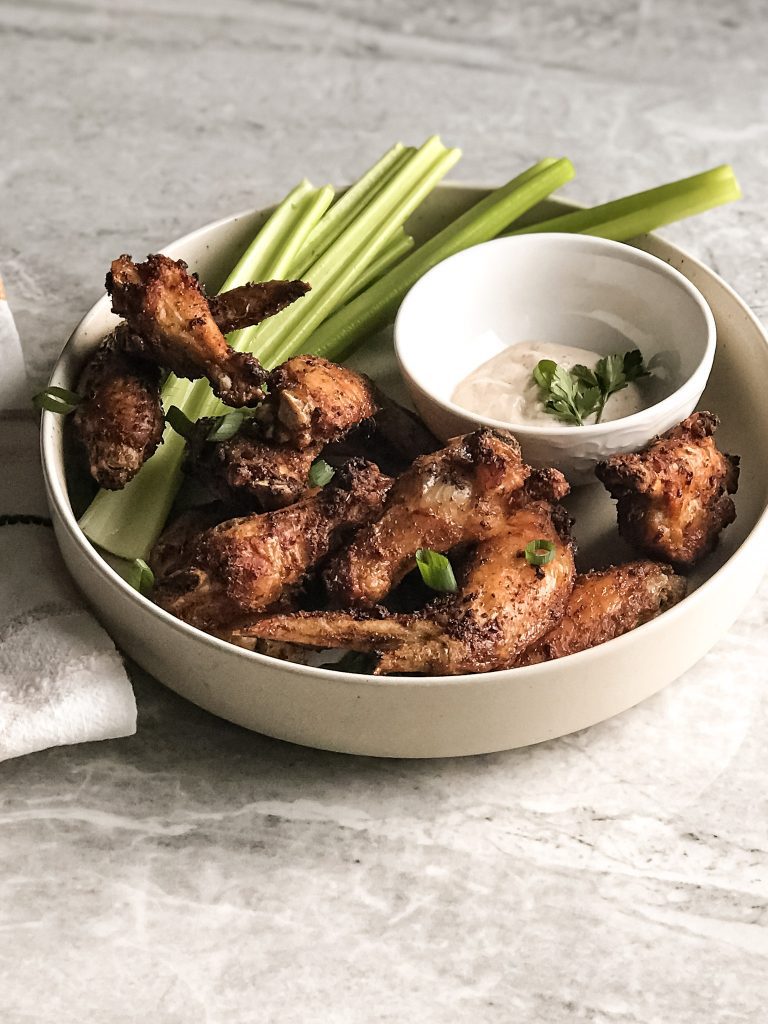
Hello! Can you share the link to buy this GF sourdough starter?
Hi Angela, here’s the link! https://amzn.to/42sk6qR
Hi, I have a GF Sourdough starter a friend gave me several months ago. I have stored it in the fridge. Can I still use it? and how do I go about doing that? Thank you!
Hi Suzie! If the starter has been in the fridge for several months, you’ll want to look closely for any mold growth. If there is any mold, discard it and get some more or start a fresh gf starter. If there aren’t any signs of mold, take it out of the fridge and feed it some gf flour and water. Amounts vary depending on how much is there to start with. Hope this helps!
Hi. I have a question after you full transition your GF starter with the GF flour, how do you maintain it measurement wise and frequency?
Thanks Michelle
Hi Michelle, I maintain my gluten free starter as you would a regular one but with gluten free flour instead. So that is 1:1:1. How ever much starter you have, you weigh or measure it. ( At this point you can remove some to use as “discard” so you’re not having such huge amounts to feed.) You then feed it equal amounts of gluten free flour and non chlorinated water. Mix the starter, water and gf flour all together and then place it in a clean container. Cover it with a tea towel or paper towel with a rubber band to secure it closed and that’s it!
As for frequency you should feed it once a day if it is out on your counter. You can put it in the refrigerator for about a weeks time to slow down the fermenting process after you have feed it. (Just don’t forget it in there!) In the summer I sometimes have to feed it twice a day because the heat increases the enzymes activity and they eat up all the gf flour faster when it’s hotter.
Hope this helps
Do you have to transition the starter over to gf flour to make sourdough? Or can you just keep using the rice flour?
Some people prefer to use rice flour for the feedings but I have transitioned mine to using the King Arthur Measure for measure gluten free flour. As long as your starter is active for recipes it should still work fine no matter what version you prefer to feed it.
Hi! I have transitioned completely to the King Arthur 1:1 after starting with rice flour.
If I have plenty of bubbles, the starter is growing quickly in a matter of 6 hours or less, it has a nice yeasty smell to it, does that mean it’s ready to bake with?
Yes! Those are all great signs, get baking
Hello! If using a loaf pan, what size do you recommend? I use 5×10 for my traditional loaves but bought new ones for the gluten free. They are 5×9 and seem so small!
I would probably split this into two loaves with that size of loaf pan and see how they do. 🙂
Hi, Joanna! My daughter has a gluten sensitivity and I would like to convert my San Francisco sourdough starter fed with organic all purpose flour to gluten free starter. I realized that there will still be trace amounts of gluten in it, but want to dedicate one just for my daughter. I feed mine 1:1:1 currently. Does it matter which flour I use to start the conversion process? I have both white rice flour and King Arthur Gluten Free measure to measure. And how many days should I do each of you recommend a two step transition process?
Thanks,
Mary Ann
Hi Mary Ann! I would start transitioning to the King Arthur GF Measure for Measure (M4M) if your goal is to be using my gluten free sourdough bread recipe. It will be a long process to transfer it over but I would do something like this: Day 1, 1 part starter 3/4 all purpose flour 1/4 GF M4M and 1 part water. Do that for 3 days. Day 4, 1 part starter, 1/2 all purpose flour and 1/2 GF M4M and 1 part water for 3 days. If all still looks well and starter is active, on Day 8 1 part starter 1/4 all purpose flour and 3/4 GF M4M 1 part water. Do that for 3 days and then start feeding it with just the GF M4M. When it is completely transferred over to the King Arthur GF M4M just keep an eye on the activity but I think it should be successful this way! Best wishes on the journey to support your daughter!
Hello! I’m on day 8 of my sour dough starter! How do you know when it’s ready? My starter has been X2 and X3 everytime I feed. Also do you continue to feed like this once you start baking?
I would say by day 8 you should give it a try!
Yes, you will continue to feed your starter to keep it alive, and placing it in a new container after each feeding to keep mold growth from ruining it. But if you find that the amounts you are needing to feed it to keep it going is too much, you can use other recipes for the “discard”. I don’t ever actually throw away any starter, I just use it in other recipes. I have some of my favorite uses for discard in my gluten free sourdough recipe section.
I have use strickley KA 1:1 sourdough starter and every time I add Psyllium husk the bread comes out gummy in the middle, do we have to add husk if the flour 1:1 already has the starches added?
Hi Tara! My gluten-free sourdough starter is also strictly made with King Arthur’s Measure for Measure blend, and I do add psyllium husk. If your bread is coming out gummy, make sure to bake it until it reaches an internal temperature of at least 210°F. You can also try increasing the amount of GF flour blend slightly or adding a bit of rice flour to help improve the texture. I hope that helps! Let me know if you have any other questions.
Thank you for sharing your gluten free journey with us! I just started making gf sourdough. I’m currently using Cultures for Health gf sourdough starter that I activated with and am maintaining with brown rice flour. I’m curious about the purpose of transitioning it to the King Arthur flour, could you explain?
Hi An! You’re so welcome, I love hearing that you’ve started your gluten-free sourdough journey! The reason I transition my starter to King Arthur’s Measure for Measure flour is that it provides a more balanced blend of starches and grains, which helps create a more reliable rise and texture in baked goods. Brown rice flour alone can work, but I find it tends to be less predictable and may need extra support from added starches. That said, you can absolutely experiment with maintaining your starter with just rice flour and see how it performs in different gluten-free sourdough recipes! It’s always fun to test and find what works best for you. Let me know how it goes—happy baking!